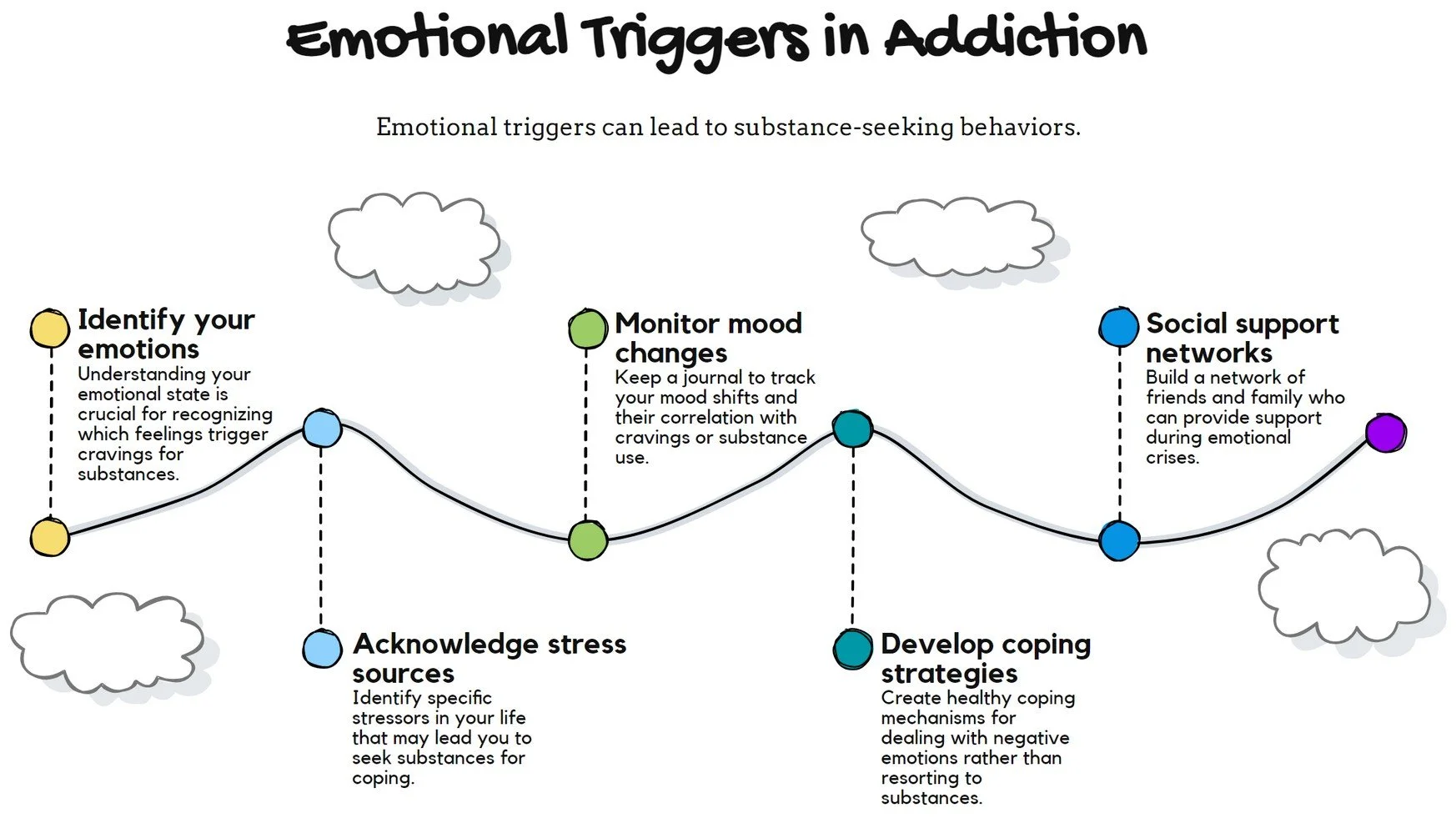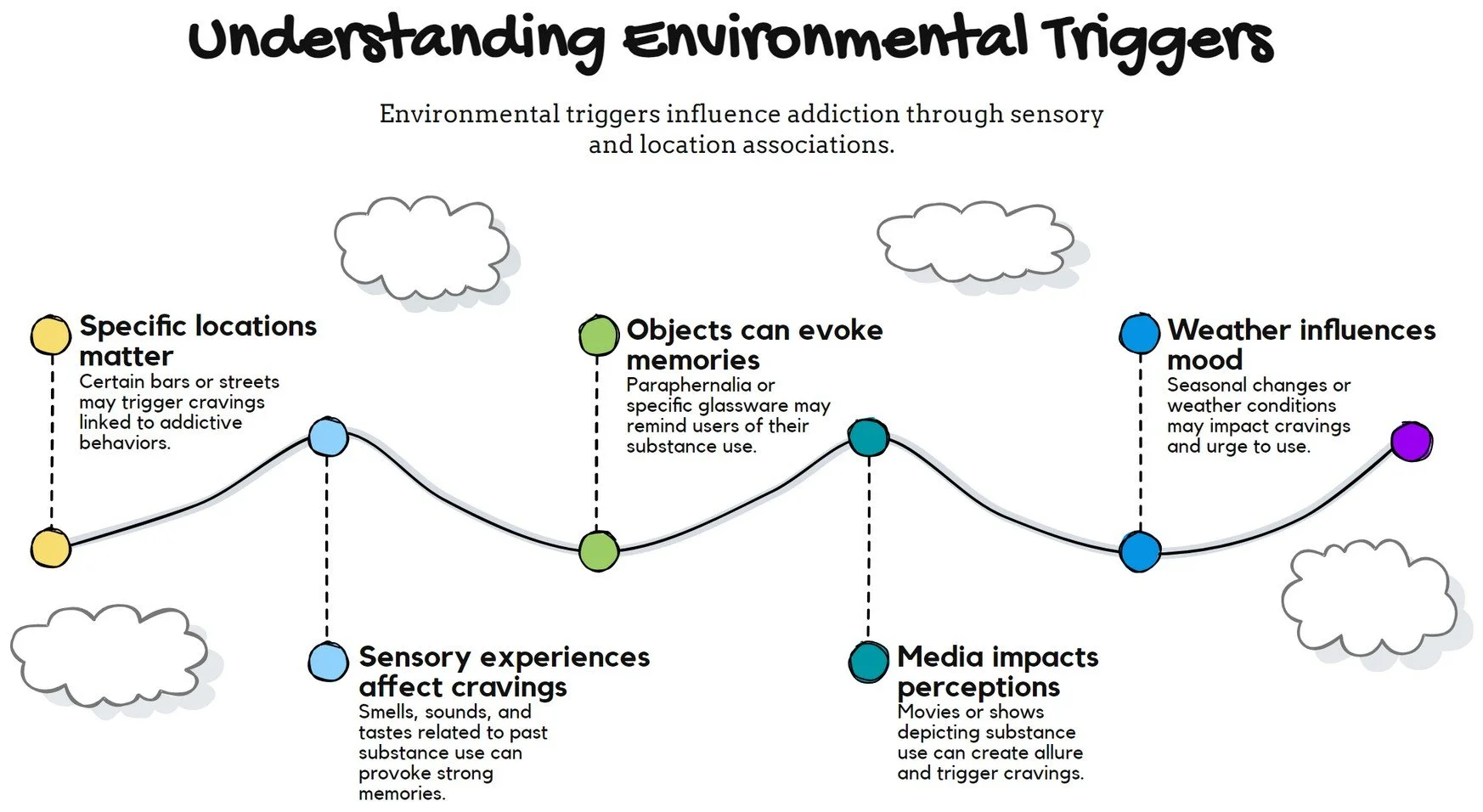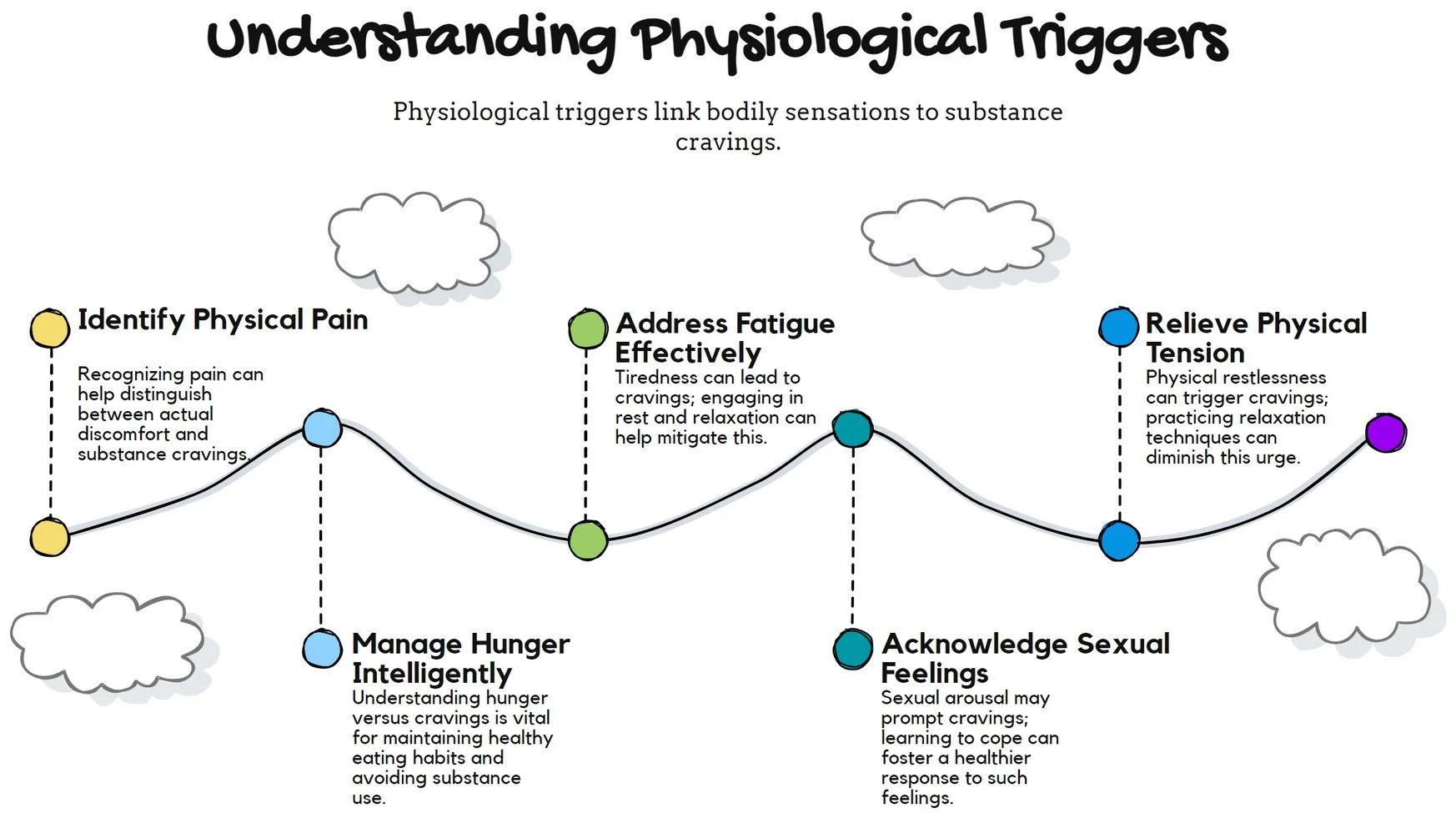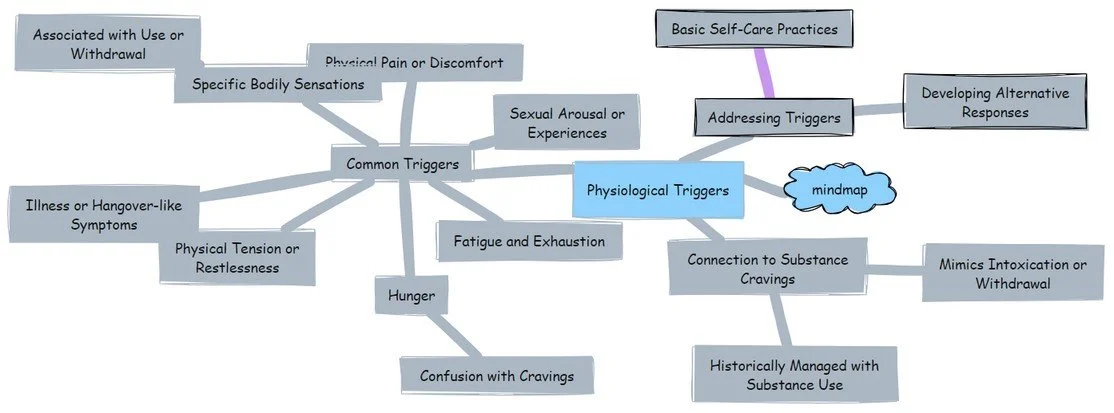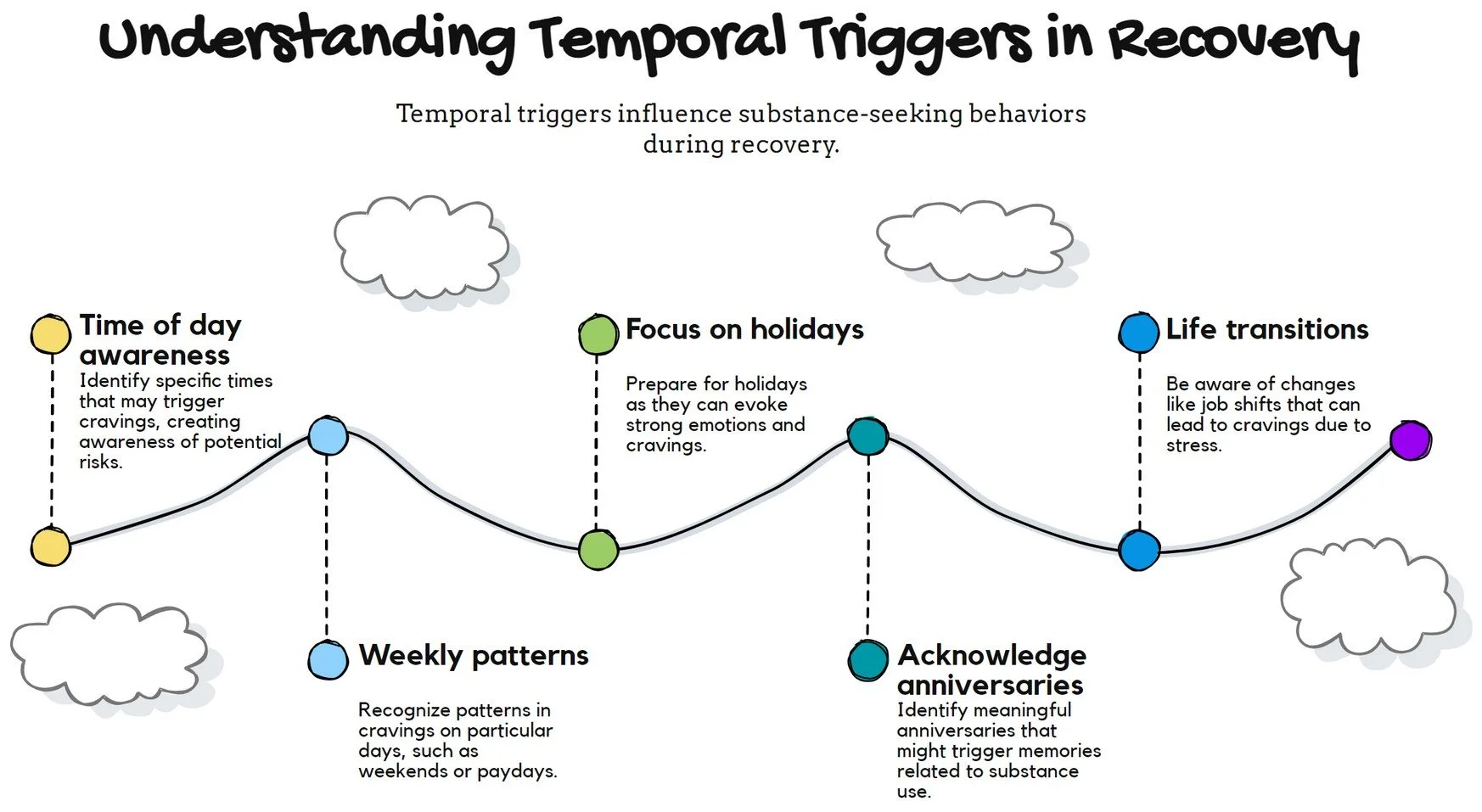
Invisible Threads: A Workbook for Understanding and Managing Recovery Triggers

Invisible Threads: Understanding and Managing Recovery Triggers
While some triggers are obvious - like being in a bar or feeling stressed - many are subtle and unexpected, such as specific smells, times of day, or even positive emotions. Simple avoidance, though necessary early on, proves insufficient as recovery progresses.
This guide helps you identify and respond effectively to triggers across seven key categories:
Emotional triggers: Feelings that previously led to substance use
Environmental triggers: Places and sensory experiences associated with past use
Social triggers: Relationship dynamics and interpersonal situations
Physiological triggers: Bodily sensations connected to addiction
Psychological triggers: Thought patterns that facilitate relapse
Temporal triggers: Times and dates linked to substance use
Success triggers: How positive developments can paradoxically increase risk
By mapping your personal trigger landscape and developing targeted response strategies, you'll transform these challenges into opportunities for deeper healing. The path forward isn't about eliminating all triggers, but developing the awareness to recognize them and the tools to respond effectively.
Between trigger and response lies a space of choice that grows larger with each day of recovery practice – where substances are no longer your default response to the full range of human experience.

Invisible Threads: Understanding and Managing Recovery Triggers
Recovery from addiction involves navigating complex triggers that can activate cravings and threaten sobriety. These "invisible threads" connect seemingly harmless stimuli to deeply ingrained substance-seeking behaviors, often operating below conscious awareness.
While some triggers are obvious - like being in a bar or feeling stressed - many are subtle and unexpected, such as specific smells, times of day, or even positive emotions. Simple avoidance, though necessary early on, proves insufficient as recovery progresses.
This guide helps you identify and respond effectively to triggers across seven key categories:
Emotional triggers: Feelings that previously led to substance use
Environmental triggers: Places and sensory experiences associated with past use
Social triggers: Relationship dynamics and interpersonal situations
Physiological triggers: Bodily sensations connected to addiction
Psychological triggers: Thought patterns that facilitate relapse
Temporal triggers: Times and dates linked to substance use
Success triggers: How positive developments can paradoxically increase risk
By mapping your personal trigger landscape and developing targeted response strategies, you'll transform these challenges into opportunities for deeper healing. The path forward isn't about eliminating all triggers, but developing the awareness to recognize them and the tools to respond effectively.
Between trigger and response lies a space of choice that grows larger with each day of recovery practice – where substances are no longer your default response to the full range of human experience.
Emotional triggers connect specific feeling states to substance-seeking behavior. In active addiction, substances often become the primary method for regulating emotions—whether to enhance positive feelings, suppress negative ones, or simply escape emotional awareness altogether. This creates powerful associations between particular emotional states and the desire to use substances.
Recognizing your personal emotional trigger profile—which emotions are most likely to activate cravings for you specifically—is essential for developing targeted response strategies.
Environmental triggers operate through physical locations, sensory stimuli, and objects associated with past substance use. The brain creates powerful associations between these environmental elements and addiction pathways, sometimes at an unconscious level.
These associations can be remarkably specific and idiosyncratic, sometimes operating through subtle environmental cues you may not consciously recognize as connected to past use.
Social triggers involve relationships, interpersonal dynamics, and social contexts that have become associated with substance use. These can be particularly challenging because human connection is essential for wellbeing, yet certain social situations may strongly trigger cravings.
Navigating social triggers requires balancing necessary human connection with appropriate boundaries around high-risk relationships and situations.
Physiological triggers connect bodily states and sensations to substance cravings. These physical experiences may mimic aspects of intoxication or withdrawal, or they may simply have been historically managed through substance use.
Addressing these triggers often involves both basic self-care practices and developing alternative responses to physical states previously managed with substances.


